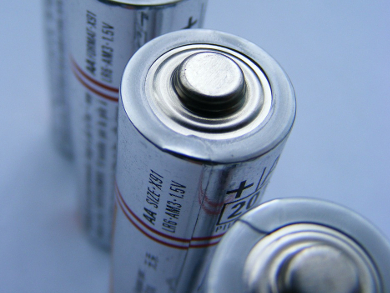There is a substantial need for rechargeable lithium-ion batteries (LIBs). New electrode materials such as sulfur are in demand because of their high theoretical capacities combined with other advantageous features like low cost, high natural abundance, and safe operation. However, a substantial drawback is the high solubility of intermediate charge and discharge products, such as lithium polysulfides (Li2Sx), in the electrolytes of LIBs, which leads to a substantial cathode mass loss resulting in fast cell degeneration.
Gleb Yushin, Georgia Institute of Technology, Atlanta, USA, and colleagues used a solution of lithium bis(fluorosulfonyl)imide salt (LiFSI) in dimethoxyethan (DME) as an electrolyte for Li-S batteries. This electrolyte leads to a cathode mass loss of only 23 % after 1000 cycles and a high average coulombic effectiveness of nearly 100 %. These effects are due to a passivating, yet Li-permeable layer on the electrode surface, which is formed in situ and which suppresses any further polysulfide dissolution. Quantum chemical calculations suggest that the formation of FSI(-F) radicals, subsequent radical-induced reactions with polysulfides, and the polymerization of DME with LiF are responsible for the formation of the protective layer on the surface of the electrode.
- In Situ Formation of Protective Coatings on Sulfur Cathodes in Lithium Batteries with LiFSI-Based Organic Electrolytes,
Hyea Kim, Feixiang Wu, Jung Tae Lee, Naoki Nitta, Huan-Ting Lin, Martin Oschatz, Won Il Cho, Stefan Kaskel, Oleg Borodin, Gleb Yushin,
Adv. Energy Mater. 2014.
DOI: 10.1002/aenm.201401792




